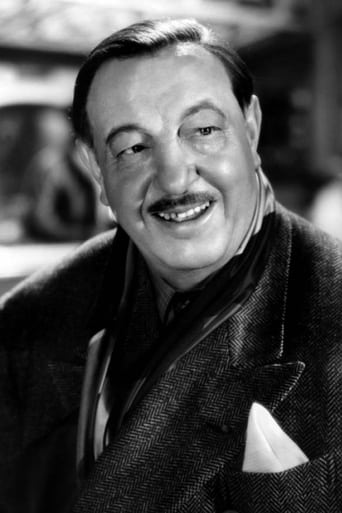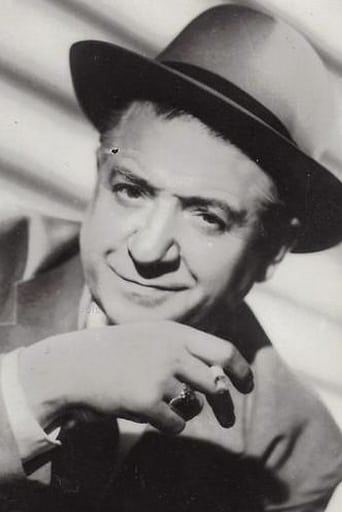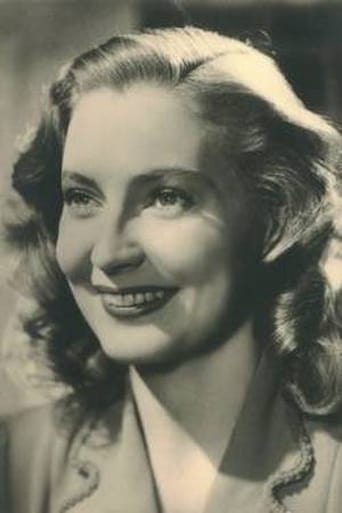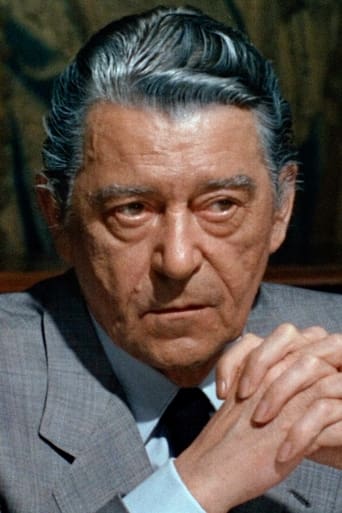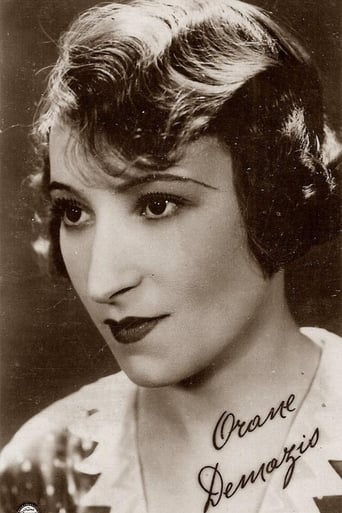Konterr
Brilliant and touching
CommentsXp
Best movie ever!
Stephanie
There is, somehow, an interesting story here, as well as some good acting. There are also some good scenes
Yazmin
Close shines in drama with strong language, adult themes.
Michael_Elliott
Les misérables (1934) **** (out of 4)There have been countless versions of Victor Hugo's novel but it's hard to imagine one as special as this French epic clocking in just under five-hours. The story is pretty familiar has convict Jean Valjean (Harry Baur) is released from prison after serving a total of nineteen years for stealing a loaf of breed. Once released his given a second chance by a priest and decides to turn his life around and live for good things but the ruthless Inspector Javert (Charles Vanel) refuses to let him be. There are certainly some flaws in this film, which might cause many to drop the four stars down a bit but the superb performance by Baur and the remarkable story were enough to make this a must-see for all film buffs as it's certainly one of the most impressive epics of its day.I think what really makes this film so special is the performance by Baur who really turns in a remarkable performance that is easily one of the most memorable of the decade. There have been many great actors to play the role of Valjean but Baur has the perfect look for the part. When we first see him as he's being released from prison he has the look of a man who has spent nearly twenty-years in hard labor. When he's playing the Mayor you can't help but really see him as that man and when the character changes once again towards the end of the picture you can't help but believe him here as well. The character development in this story is a remarkable one and Baur captures every twist and turn and really does the character a lot of justice. It's hard to imagine anyone else doing better and that's saying quite a bit as many great actors, including Fredric March a year later, played the part. I think the greatness of Baur leads to one of the film's weaknesses and that is the supporting cast as none of them come close to his emotion or power. The supporting performances are all good but at the same time they're all smashed by Baur. It's hard to make heads or tails of Vanel as, to my surprise, the Javert character is pretty much underwritten and takes a backseat for the majority of the film. I was surprised that his cat-and-mouse chase of Valjean was cut back so much and that his obsession with catching the convict wasn't made more of a focus.Running just under five hours the film was broken down into three parts. I think the first is the most powerful followed by the second and then the final chapter. The third part of the film deals with the French Revolution and I think it spends a bit too much time on the fighting as this takes away from the Valjean story. With that said, the battle sequences are magnificently filmed and contains some terrific camera-work. When the first battle breaks out it looks as if someone is using a hand-held camera that really puts you in the middle of all the action. The battle scenes have a very realistic look at them and one can certainly see the influence that they would have on future films. Another major aspect to the story is that there are so many details that are left out of other versions. Considering the running time, it really goes without saying that you can focus in on many of the supporting characters and give them a lot more to do here. This was the third version that I've seen this year and I was surprised to see that the Valjean-Vanel relationship stays pretty much the same while it's the supporting players that really get expanded. I found the 1935 version with March and Charles Laughton to be a terrific entertainment and on a pure entertainment level I might call it the best. In terms of filmmaking I don't think you could take away anything from this version as it's certainly the most ambitious and contains some of the most raw emotions. The story is one that's been told countless times but this epic really is something special. The cinematography and direction makes it something special but it's the wonderful performance by Baur that makes it a must see.
MartinHafer
I have seen five different versions of this Victor Hugo film, read the book and even seen the play--so it's obvious that I love the story and have different insights than the typical viewer. Clearly of the films I have seen this is the best version for many reasons. The biggest reason is that at almost five hours, it comes closest to Hugo's vision, as "Les Misérables" is a huge and complex story--and most films skip major portions of the book in order to squeeze it into a normal format. However, with this version, the film was broken into three distinct full-length segments and most of the important elements of the film are present (even if they did change the ending and a few other portions of the story). The second reason is that although it is a black & white film, it is the most artistic of the bunch--with some of the best cinematography of any film of the era. The way the shots are framed is brilliant--beautiful, unique and lovingly recreated. It was directed and filmed by masters. Third, I liked the guy who played the lead character, Jean Valjean. Unlike the 'pretty boys' who often play this man (such as Richard Jordan, Frederic March or Liam Neeson), Hary Baur was the hulking man the character was in the book--Neeson and the rest simply didn't have the physical look of Valjean and Baur had a nice, restrained performance.So why if it all looks so great do I only give the film a 9--after all, it is a wonderful film. The fact is that I rarely give 10s. To me a 10 must mean something--that a film is essentially perfect. This is a great film, but not perfect. Although a tiny quibble, Fantine was supposed to be missing her teeth but here it's obvious they were blacked out instead. Now I am NOT suggesting they should have knocked out her teeth, but they could have been more careful in the filming (which was otherwise perfect) to make sure it wasn't obvious they were blackened. And finally, my biggest complaint was about the relentless Inspector Javert. To me, he was THE most important and complex character in the story. Here, however, he's more of a minor annoyance and the depth of his presence was minimized. Plus, while his suicide could have been interpreted the way the film suggested, I always felt Javert killed himself not because of his failure at his job (as the film states) but because of his realization that his entire legalistic life was for nothing. Still, the movie is amazing and I suggest you see it and read the book--it's one of the best stories I've read and one that has many deep philosophical questions--questions that just aren't always present in the films.
Benoît A. Racine (benoit-3)
TFO (la Télévision Française en Ontario), the French Ontario TV channel has started showing the complete version of this 5 hours and 15 minutes piece (3 x 1 hour and 47 minutes) in three parts, on three consecutive Sundays, starting yesterday. This is a major event as this film is almost never shown, is not available on DVD and is usually cut down, when shown at all, to three hours. It is an amazing accomplishment for 1934 because of the following elements: the mobility of the camera, the sound effects, the music by Arthur Honegger, the witty, almost literary, visual ellipses, the interpretation of Baur and Vanel, the editing and eerie expressionistic camera angles, and the production values in general (sets and costumes cannot be topped). The only drawback of the TV showing is that the film is cropped vertically (the old "tops of the heads are missing" syndrome), which comes from cropping a 1.30:1 narrow ratio early-talkie film onto a 1.37:1 TV screen without pillar-boxing. It's still worth the watch. Needless to say: This is long overdue on DVD!Historical note: The creepy night scene where Cosette is sent, despite her fears, to fetch water a long way from home at the request of her heartless keepers, is a direct inspiration for Walt Disney's Snow White's panicky flight through the forest scene of three years later (1937).May 2008 update: As most of you probably know, the whole film is now available on DVD from Criterion's Eclipse series in Region 1.
Jesús Ibarra
Since many years ago I've been a fan of Victor Hugo's novel, Les Miserables, and I can say this is one of the best and most faithful film adaptations of the story. Harry Baur is great as Jean Valjean, and all the cast in general is excellent. There is only one thing I may object about the film: the omission of the episode of Jean Valjean and Cosette in the Petit-Picpus convent and consequently the omission of the gardener Fauchelevent. This film is far much better than the one which is consider the classic version of Les Miserables, the one directed in 1935 by Richard Boleslawski, starring Frederich March as Valjean and Charles Laughton as Javert. Raymond Bernard's version of Les Miserables is only comparable to other two French film versions of the novel: the 1982 directed by Robert Hossein, starring Lino Ventura and the 2000 TV version, directed by Joseé Dayan, starring Gerard Depardieu.

